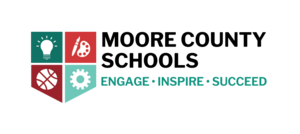Learning Domain: 1. Computing Systems
Standard: Evaluate the features available on digital devices to perform a variety of classroom tasks.
Degree of Alignment:
Not Rated
(0 users)
Learning Domain: 1. Computing Systems
Standard: Model how computer hardware and software work together as a system to accomplish tasks.
Degree of Alignment:
Not Rated
(0 users)
Learning Domain: 1. Computing Systems
Standard: Choose appropriate devices to perform a variety of classroom tasks.
Degree of Alignment:
Not Rated
(0 users)
Learning Domain: 1. Computing Systems
Standard: Describe the function of common physical components of computing systems (hardware) with appropriate terminology.
Degree of Alignment:
Not Rated
(0 users)
Learning Domain: 1. Computing Systems
Standard: Operate appropriate software to perform a variety of tasks.
Degree of Alignment:
Not Rated
(0 users)
NC.DLS.CT.5
North Carolina Digital Learning Standards
Grades K-12
Learning Domain: Computational Thinker
Standard: Students develop and employ strategies for understanding and solving problems in ways that leverage the power of technological methods to develop and test solutions.
Degree of Alignment:
Not Rated
(0 users)
NC.DLS.CT.5.a
North Carolina Digital Learning Standards
Grades K-12
Learning Domain: Computational Thinker
Standard: Students formulate problem definitions suited for technology-assisted methods such as data analysis, abstract models and algorithmic thinking in exploring and finding solutions.
Degree of Alignment:
Not Rated
(0 users)
NC.DLS.CT.5.b
North Carolina Digital Learning Standards
Grades K-12
Learning Domain: Computational Thinker
Standard: Students collect data or identify relevant data sets, use digital tools to analyze them, and represent data in various ways to facilitate problem-solving and decision-making.
Degree of Alignment:
Not Rated
(0 users)
NC.DLS.CT.5.c
North Carolina Digital Learning Standards
Grades K-12
Learning Domain: Computational Thinker
Standard: Students break problems into component parts, extract key information, and develop descriptive models to understand complex systems or facilitate problem-solving.
Degree of Alignment:
Not Rated
(0 users)
NC.DLS.CT.5.d
North Carolina Digital Learning Standards
Grades K-12
Learning Domain: Computational Thinker
Standard: Students understand how automation works and use algorithmic thinking to develop a sequence of steps to create and test automated solutions.
Degree of Alignment:
Not Rated
(0 users)
Learning Domain: Measurement and Data
Standard: Solve word problems involving: Quarters, dimes, nickels, and pennies within 99¢, using ¢ symbol appropriately; Whole dollar amounts, using the $ symbol appropriately.
Degree of Alignment:
Not Rated
(0 users)
Learning Domain: Number and Operations in Base Ten
Standard: Add up to three two-digit numbers using strategies based on place value and properties of operations.
Degree of Alignment:
Not Rated
(0 users)
Learning Domain: Operations and Algebraic Thinking
Standard: Represent and solve addition and subtraction word problems, within 100, with unknowns in all positions, by using representations and equations with a symbol for the unknown number to represent the problem, when solving: One-Step problems: Add to/Take from-Start Unknown, Compare-Bigger Unknown, Compare-Smaller Unknown; Two-Step problems involving single digits: Add to/Take from- Change Unknown, Add to/Take From- Result Unknown.
Degree of Alignment:
Not Rated
(0 users)
Learning Domain: 1.5. Computational Thinker
Standard: Students develop and employ strategies for understanding and solving problems in ways that leverage the power of technological methods to develop and test solutions.
Degree of Alignment:
Not Rated
(0 users)
Learning Domain: 1.5. Computational Thinker
Standard: Students formulate problem definitions suited for technologyassisted methods such as data analysis, abstract models and algorithmic thinking in exploring and finding solutions.
Degree of Alignment:
Not Rated
(0 users)
Learning Domain: 1.5. Computational Thinker
Standard: Students collect data or identify relevant data sets, use digital tools to analyze them, and represent data in various ways to facilitate problem-solving and decision-making.
Degree of Alignment:
Not Rated
(0 users)
Learning Domain: 1.5. Computational Thinker
Standard: Students break problems into component parts, extract key information, and develop descriptive models to understand complex systems or facilitate problem-solving.
Degree of Alignment:
Not Rated
(0 users)
Learning Domain: 1.5. Computational Thinker
Standard: Students understand how automation works and use algorithmic thinking to develop a sequence of steps to create and test automated solutions.
Degree of Alignment:
Not Rated
(0 users)



Emphasize correct choice of device to align with K2.CS.01 and 35.CS.01
Emphasize function of computer hardware to align with K2.CS.02 and 35.CS.02
Emphasize correct choice of software to align with K2.CS.03